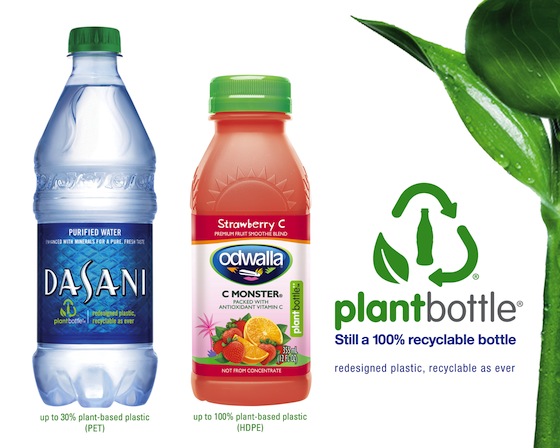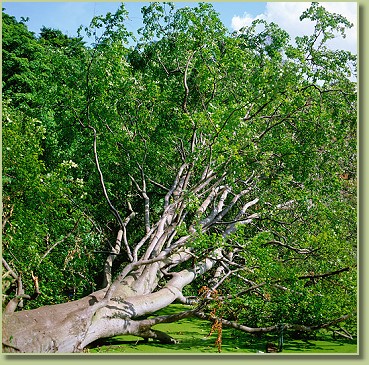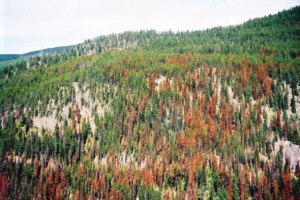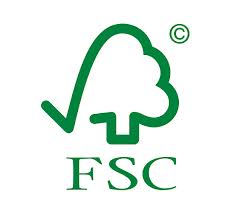The Greenest New Year Yet
Posted: December 29, 2013 Filed under: Environmental Issues | Tags: Concrete, Insulation, Preservation, Solar, Steel, Water, Wind Leave a comment
It is that time of year, when once again we review the past year and consider what good was accomplished, and if anything was not to our liking and whether or not there is any way we can address that. At the same time, we turn our attention to the new year entering in and wonder what challenges and opportunities it will bring our way.
What are some of the eco-friendly material considerations that make sense today and looking forward ?
Recycled Steel is an excellent choice that saves trees and is more durable in the presence of high winds or earthquakes for building frames. Did you realize that a 2,000 sq ft house uses up to 50 trees in the framing ? The same building framed in recycled steel will use up the remains of approx 6 scrapped cars. In 2011, 2.2 million tons of scrap steel from cans were recycled. In construction and transportation products, there is a high recycling rate – 95% in regards to automobiles, for example. Over the past 50 years, more than 50% of the “new” steel produced has ultimately been recycled. In 2012, the overall steel “recycled” rate was 71%, compared to only 15% recycled back in 1988. Recycled steel requires 75% LESS energy in its manufacture than “virgin” or “new” steel would require, while reducing the solid, enduring load on landfills.
Another concept that is actually “growing old” (60 yrs) now is the idea of cast-in-place concrete walls that are sandwiched between two layers of insulation material. We have considered that for our own building plans regarding a subterranean shelter and feel that insulating the exterior of a concrete mass does indeed make energy efficient sense but are concerned that using the foam insulation on the interior side wastes the mass that could hold heat and cool over longer periods of time; and therefore, require less energy to bring up to a comfortable temperature.
To my thinking the whole consideration of concrete and insulation is an example of the kind of complex consideration that I really like to bring awareness to in this blog. Construction work with foam blocks filled with concrete is quick and easy in one sense but more time consuming in another. The work can only be accomplished in small bits, that must be allowed to cure, before another bit can be added in. Cold joints between these sections might prove an issue of concern over time.
In traditional concrete forming, it is true that plywood is utilized for forms but those forms are given the longest useful life that can be squeezed out of them. Meaning they are re-used over and over again. Personally, I have some concerns about embedding such inorganic materials as polystyrene into the environment, though that is not a total stopper for me. As to the insulation on the interior, it does complicate good, strong attachments for such additions as weight-bearing shelving. A plus for concrete is that is it is both re-usable and recyclable. There is no easy answer to whether the pluses or the minuses of concrete filled insulating materials determine a decision that remains both personal and still somewhat theoretical.
An exciting development is the plant-based (bamboo, hemp and kelp) polyurethane rigid foam developed by Malama Composites. This “new” material is finding its way into insulation, wind turbine blades, furniture and surfboards. This particular composition of foam has a high moisture and heat resistance, excellent acoustics and protects against mold and pests. It also has a higher R-value than fiberglass or polystyrene.
A living laboratory for R&D on advanced sustainable energy technologies is the Building Technology Showcase of the Fraunhofer Center for Sustainable Energy Systems headquarters in Boston’s fast-growing Innovation District. This was a deep energy retrofit of a 100-yr old bulding completed in 2013 combining cutting-edge design concepts and historic architecture.
Solar energy remains an important development in green building decisions. My favorite is the Cathedral of the Holy Family in Saskatoon, Canada (the city has an average of 2381 hours of sunshine annually) who had 1,013 silver solar cells hand soldered into their stained glass windows – how’s that for marrying the new to the old ?
Like the sun, the wind is an ever present, non-depletable and sustainable resource for energy. Wind turbines are an increasingly common feature in our planet’s landscape. Another method of utilizing wind is to provide nature ventilations to buildings to increase breathability, an increasing concern with today’s modern, “tight” buildings. One of the most innovative is China’s Pearl River Tower that pushes air through wind turbines to power the building and reduce the natural wind impacts against its 71 stories.
It is said that fresh, drinkable Water will become our planet’s most scarce resource in the coming years, so the recycling of water becomes ever more important. One way is to collect and recycle precipitation. One such application of rooftop tanks on the Bank of America Tower in New York captures up to 70,000 gallons of rain and filters that for use in cooling the building and flushing it’s toilets.
A lack of connection to Nature can have damaging effects on the human psyche, so more architects and designers build “green spaces” into their projects. These may take the form of living walls, or rooftop vegetation.
Wishing you the greenest new year yet . . . .
Information Sources –
Fraunhofer Bulding Technology Showcase – http://cse.fraunhofer.org/5cc/
Steel Recycling Institute – http://www.recycle-steel.org/Recycling%20Resources/Steel%20Recycling%20Rates.aspx
EPA Resource Conservation – Steel category – http://www.epa.gov/osw/conserve/materials/steel.htm
Cathedral of the Holy Family – Solar Stained Glass – http://www.saskatoonrcdiocese.com/cathedral/solar_energy.cfm
Huffington Post – “5 Secrets of Eco-Friendly Buildings” – http://www.huffingtonpost.ca/2013/10/07/5-eco-friendly-buildings_n_3963834.html
“How Stuff Works – 10 Cutting-edge, Energy-efficient Building Materials – http://home.howstuffworks.com/home-improvement/construction/green/10-cutting-edge-building-materials.htm
***
Blog author ~ Deborah Hart Yemm is co-founder of
Yemm & Hart, a green materials producer
***
Where do Bioplastics fit in ?
Posted: December 22, 2013 Filed under: Environmental Issues | Tags: Biodegradable, Bioplastic Feedstock Alliance, Biopolymers, Coca-Cola, Compostable, PlantBottle, World Wildlife Federation, WWF 1 CommentThe emergence of bioplastics has had my own attention for some time. Because a predominant activity of our business is the recycling of petroleum based plastics and rubbers, I have wondered whether bioplastics might eventually eliminate the need that drives our business activities.
I was appreciative of the latest effort of the World Wildlife Federation in bringing together 8 giants of industry – Ford, Nike, Procter & Gamble, Coca-Cola, Danone, Heinz, Unilever and Nestle – into an alliance known now as the Bioplastic Feedstock Alliance. I was already aware of the WWFs previous effort to protect the Cork Montado’s in Portugal. It was easier to see the “wildlife interests” in that effort as the Montado’s are home to several endangered species (including a human indigenous and sustainable lifestyle).

“Compostable” typically implies that a product should be composted in an industrial facility, not at home. Photo: Flickr/Shira Golding
The Earth911 website has an informative article – Recycling Mystery: Bioplastic – regarding plant based Biopolymers. The author, Amanda Wills writing in June of 2010, notes – “Bio-based, or plant-derivative plastics, in theory seem like the best idea since sliced bread. Bioplastics are used to create (and replace) products typically made from natural gas or petroleum. They are biopolymers, derived from renewable biomass sources such as corn starch or vegetable oil. Polyactic acid (PLA) is one form of bioplastic, produced from glucose. But while bioplastics seem like a great idea, in theory, the most important thing to understand is what to do with them once you’ve finished your to-go soda.”

In fact, Coca-Cola notes that their PlantBottle program produced 18 billion PET bottles in 2009, partially made from – guess what ? – plants. In case you’ve never noticed – many plastic bottles include a number code to facilitate recycling. These numbers (1 through 6) appear often inside the well-known chasing arrows triangular symbol. There is a movement in the plastics industry to drop that system but for now, we’ll leave that aside. Also in these chasing arrows symbol one often finds the number 7 – which is also sometimes identified as “other” and generally, avid recyclers know to put that into their landfill trash. Plastic ID # 7 includes those resins that do not fit into those other categories (1 through 6) and that includes most bioplastics.
Studies on the subject of attempting to recycle PLA with mainstream PET have provided conflicting outcomes. Back in 2010, NAPCOR (The National Association for PET Container Resources), voiced its concern for potential contamination of the PET recycling stream associated with PLA bottles and the trade association for PET plastics also voiced its concerns that an increased cost of separation, increasing contamination and yield losses would all impact recycled PET (RPET) quality and the viability of its processing.
“Biodegradable” plastics cannot actually be composted in your backyard compost pile. Heat is always a factor in plastics manufacturing and because biodegradable plastics require a very high heat to degrade; these therefore need a commercial composting facility to accomplish that. The senior material scientist for Natureworks LLC, Richard C. Bopp, worries – “When the consumer hears ‘biodegradable,’ often times they think it’s a material that you can throw out the window of your car and after one good rain, it will be back to nature, and it will fertilize the roadside”. I get it – “Saying ‘biodegradable’ is not specific enough to be useful, and it leads to all kinds of misunderstandings”.

The Earth911 articled notes – “If you use bio-based materials that can be recycled in today’s current stream, such as Coke’s new Plant Bottle or Dow’s sugar cane-based resins, then the answer is simple: Toss it in the recycling bin. But if you do buy compostable plastics, be sure to seek out an industrial composting facility near you. The most important thing to understand is your own recycling program. Call your recycler and simply ask if these types of plastics are accepted in your program. If not, use Earth911 to find local recycling for plastic #7.”
It is one of those complex ideas that this blog enjoys exploring, even if there are no easy answers to it. The WWF is concerned about issues of food security, land use and resource competition. The World Wildlife Federation seeks to protect those ecosystems that are valuable and very unique in biodiversity. They are also aware that these are precisely the ecosystems where major commodities are sourced – petroleum, agricultural and forestry products significantly. Erin Simon, who manages business and industrial packaging and material science issues at the WWF, wants to put some sound science into the decision-making process and influence the key research efforts among those brand names that are asking questions about biopolymers as potential new solutions for the future direction of their business’ products.
The trend emerging is for more transparency in the environmental and social performance not only of bioplastic materials but as built into the new Leed v4 standards that are slated to take effect in June 2015. LEED v4 seeks to challenge the marketplace to go further, make better, cleaner, healthier buildings for people to live and work in. One final positive thought about biopolymers is their potential to address CO2 in our atmosphere – there are a lot of smart phones and computing devices in everyday modern life.
Information Resources –
Plastics News – “Alliance eyes bioplastics sustainability” by Jim Johnson posted Dec 5, 2013
http://www.plasticsnews.com/article/20131205/NEWS/131209953/alliance-eyes-bioplastics-sustainability
Earth911 – “Recycling Mystery: Bioplastic” by Amanda Wills
posted June 28, 2010
http://earth911.com/news/2010/06/28/recycling-mystery-bioplastic/
***
Blog author ~ Deborah Hart Yemm is co-founder of
Yemm & Hart, a green materials producer
***
Chemicals – Natural & a Menace
Posted: December 15, 2013 Filed under: Environmental Issues | Tags: Asthma, Cancer, Chemicals, Natural, Safe, Synthetic, Toxic Leave a commentOkay, so whatever is on this planet, is actually natural. That includes man and that includes chemicals. Man has been able to combine chemicals in ways, that did not previously occur in that same manner, in “nature”; but the fact that man can combine chemicals in novel combinations must still be in accordance with natural laws. It cannot be otherwise. Toxicity, however, should be a definite concern, when it comes to whether or not we will sustain humanity’s ability to live on this planet. We have been aware through the direct experiences of more than one acquaintance that allergic sensitivities to certain chemicals are developing in people, that seriously impact their quality of daily life.
Good news comes by way of a thorough effort to address such concerns in the building of The Bullitt Center, opened in Seattle WA in April 2013. In learning the details of this new construction, I was finding within my own self a deep appreciation for such an achievement by the building’s designers. The feat that they accomplished was keeping OUT of its construction, more than 360 commonly used and potentially toxic elements and compounds – from its walls and wires, to its pipes and paints.
A report by the scientists, who focused their research on just one common condition – “asthma” – resulted in “Asthmagens” on the Healthy Building Network website. Their report underscores the potential dangers of this vast and largely undisclosed stew of chemicals hiding in most building materials used in modern homes, schools, hospitals and offices. Americans now spend an estimated 90 percent of their time in such indoor spaces. This list of chemicals includes neurotoxins, carcinogens, hormone mimics and reproductive disrupters, which could be playing a role in a number of today’s increasing health problems.
I personally believe that we see so many incidences of cancer in the general population now for similar reasons to why there is such an increase in the incidence of asthma. Human beings are exposed to great concentrations of chemicals, that they did not naturally evolve to be in that much contact with, due to the advances of modern chemistry in concert with industry, for the production of products that contribute to revenue streams. These products become conveyances of those substances, that each of us are coming into increasingly frequent contact with.
I welcome the ever closer scrutiny of design professionals with the educated ability to analyze and interpret the safety of such common ingredients of modern living. They are bringing us not only greater transparency but refining our awareness of these impacts.
The group that created the Pharos database cross-referenced a list of known and suspected asthma-causing chemicals with ingredients in over 1,300 flooring, adhesive, insulation and other building products. A priority list of 20 target chemicals were chosen for their likelihood of preventing the development of asthma. These chemicals all showed a significant potential to cause the onset of asthma, and were likely to actually be absorbed, inhaled or ingested by building occupants. Many volatile organic compounds (VOCs), such as formaldehyde, made the list. The potentially toxic emissions from these products peak when the product is new and then dwindle over time as they are “off-gassed”. Semi-volatile organic compounds (SVOCs), which tend to capture less attention from the building industry, are also represented on the list, due to their propensity to create much longer-term indoor hazards because they slowly degrade over time. Also included are flame retardants, phthalate plasticizers and other SVOCs which have been also identified as hormone disrupters. Some of these are better known for their emerging links to things like obesity, breast cancer and attention deficit disorder, but evidence suggests the chemicals can affect the lungs and the subsequent development of asthma, as well.
Over recent decades, as more and more man-made chemical complexes have entered our daily lives, energy efficiency standards simultaneously tightened-up buildings. One of the troublesome trade-offs to this well-intentioned campaign is the trapping of toxic gases released by those chemical ingredients. Even a construction project that earns a top rating for being a “green building” (such as the U.S. Green Building Council’s Leadership in Energy and Environmental Design – LEED) certification, may still be packed full of toxins — with perhaps even less of an opportunity, due to energy efficiencies, for their escape.
We appreciate the attempts in considering the new LEED standards unveiled in November to offer manufacturers credit for the disclosure and elimination of certain hazardous chemicals. While this may have immediate financial implications for business, we are in agreement with the long term intention – “to ultimately reduce harmful chemical exposures.” We understand that in order to do that, disclosure must occur regarding what is actually in the product that is going into the building. Many of those who are genuinely green-hearted in the design world (including those creating the new LEED standards) have already realized that many of the kinds of chemicals that they would like to keep OUT of buildings, are viewed by their manufacturers as “trade secrets”. They often don’t appear on any disclosure of ingredients list and many have never been tested, for their effects on human health. We understand that that the environment’s ability to sustain life can be seen as intimately linked with the health of human beings.
Next year (Jan 15, 2014), designers will be able to access a list of ALL of the ingredients approved for the Bullitt Center (950 individual components) on their website. We look forward to that gift of The Bullitt Center’s willingness to share their hard work, with all of us who love healthy buildings full of healthy people.
Information Resources –
Huffington Post – “Are Toxic Chemicals In Building Materials Making Us Sick?” by Lynne Peeples posted Dec 12, 2013
http://www.huffingtonpost.com/2013/12/12/building-materials-asthma_n_4427243.html
Healthy Building Network – “Full Disclosure Required – A Strategy to Prevent Asthma Through Building Product Selection”
http://www.healthybuilding.net/reports/asthmagens/index.html
Living Building Challenge
http://living-future.org/node/117
Pharos Building Product Library
http://www.pharosproject.net/product/
***
Blog author ~ Deborah Hart Yemm is co-founder of
Yemm & Hart, a green materials producer
***
Really Seeing The Trees
Posted: December 8, 2013 Filed under: Environmental Issues | Tags: Balanced Perspectives, Forests, Health, Insects, Logging, Stewardship, Trees Leave a comment
It really is true that sometimes one can’t see the forest for the trees. After coming to inhabit this forested farm, our family was reluctant to leave any impacts on the forest. Some trees were selectively harvested to create the log cabin retirement home that each of my in-laws passed from life within, just as they wanted to do. Some firewood was gathered from fallen trees. A few Christmas Trees were taken from the land but then, we started buying live trees. On the surface, it seems to equal 2 trees – the one not cut and another one planted. However, after spending weeks indoors and being transplanted into a field in mid January, success is rarely the outcome.
Living in a forest is an interesting experience – fires, storms, wildlife, unexpected late season freezes, insects and droughts all have impacts on the health and vitality of the forested land. Man has an impact on the forest’s health, even if the choice is quite “hands-off”.
So, it came to pass that with my in-laws passing from our physical lives, we became stewards of a significant piece of forest and began to understand some practical realities. While the wild can care for itself, that does not necessarily equate to optimal health. Our domestic pets are healthier than the wild critters that sometimes eat the nightly leftovers of the backporch kitties. And a forest that is cared for is healthier than one that is left to its own devices. Humans are a part of Nature. We are the planet’s intellectual response to many on the ground events.

Back in 2001, a large storm passed through the forest to the south of our property’s boundaries. While the owner did intend to log that land, they had a gentler and more selective plan in mind. However, Mother Nature’s extreme handling left that property with 60-70% blow down. We tried to hike that area shortly thereafter and it was very difficult and slow going.
So, there was a fast salvage effort and the land was re-planted roughly without any soil preparation in a monoculture of pine trees. The trees have never-the-less thrived and grown well and without a doubt they are sequestering a lot of carbon from the atmosphere.
Then, in 2009, our region experienced a devastating storm, approx. an inland hurricane, known as a derecho that took out a very large swath of forest state-wide. In fact over the next few years after that, severe storms came almost every year. 50 yr old Oaks and Pines always got the worst of it as they were sent crashing to the ground. We began to rethink how we care for the forest.

During a long trip through the western states we saw the devastation of monoculture and overly dense forest – protected from wildfire and logging – come under attack from the Pine Beetle. This is not the first such devastating result of another part of nature – insects !!
The Forest Stewardship Council seeks to promote environmentally sound, socially beneficial and economically prosperous management of the world’s forests. While we do not claim to be a FSC-certified forest here in Missouri, we do appreciate their efforts. We share their values in wanting to consider long-term impacts on the health of our forest eco-system in every decision that we make. We consider our farm a preserve and our management stewardship. Our forest is home to a large diversity of biomes, wildlife and flora and sustains a healthy flow of perrenial watershed throughout.

Even though our farm is not FSC-certified, because truly we are not in the timber business but simply of a forest stewardship mentality, as environmentalists we do recommend that architects and designers consider FSC-certified wood when specifying green-building products for their projects.
We asked “Trees Forever” – “What Makes a Healthy Forest ?”. A forest of a mixed structure that includes ground layer, wildflower layer, shrub understory layer and canopy trees is less likely to be invaded by exotic species and insect pests. That is the perspective that we employ. Over a decade ago, we planted almost 20,000 trees in a 40+ acre riparian buffer in the watershed. We planted a broad diversity of many species of hardwood, nut trees, evergreen and flowering trees. The Emerald Ash Borer that is threatening the health of Midwest forests, may or may not attack the Green Ash trees that we planted but since these are all in small stands with other species of trees around them, they are more protected than they might have been had we focused on only one species of tree.

One of the reasons that we are doing selective logging and timber stand improvements on our forest is that if there is a forest of even aged trees, they are more likely to end up with invasive species. We consult with state and professional foresters for advice to improve the health of our forest. Just like parents seek the advice of a pediatrician to keep their children healthy. As my business partner and husband, Steve, takes time away from our recycled materials business to spend some time outdoors, cleaning up the areas impacted by necessary logging and stand improvements making brush piles, water bars, smoothing terrain and planting in cover crops, as we plan for aesthetics and practical outcomes for areas needing attention by replanting trees, we are like parents or gardeners in stewarding our forest to be not only healthy but accessible and able to provide enjoyment for any humans who might hike the natural beauty of this forest.
One of the reasons that we were attracted to offering Cork as one of our recycled materials, was the delight in being able to bring an organic, sustainable material into the assortment that we offer our customers. Trees, shelter, shade, food, purification, the Earth’s stubbly hair. Trees are easy to love and appreciate. Enjoy connecting with a tree this Christmas – indoors or out.

***
Blog author ~ Deborah Hart Yemm is co-founder of
Yemm & Hart, a green materials producer
***
The Good, Bad & Ugly Perceptions About Plastics
Posted: December 1, 2013 Filed under: Plastics | Tags: Balance, Litter, Perceptions, Plastics, Reality, Recycling Leave a comment
Most people are NOT as conflicted about glass, aluminum and paper, in quite the ways they are generally very conflicted, about the pervasive presence of plastics in modern life. We depend upon plastics to support our family, and we LOVE LEED, and we are not the norm, at least for the plastics industry. Actually, we are a bit out of the box, while being every bit as professionally oriented as any good business should be. We fall through a lot of cracks and for good reason.
Plastics gets bashed a lot. I even bash it a bit here. For example, the McDs coffee cup blog. Or the Green Globes fiasco blog. We aren’t aligned with “big” plastics, etc; but we are grateful that plastics help support our family. We are supported because we extend the life of natural resources that have already been extracted by recycling them into quality new materials for the building construction industry. We were always environmentalists but our entry into the recycling business sphere was timely, and for that we are grateful; because in our earliest boot-strap days, we got a lot of free publicity simply because we were doing a positive thing.
I do agree with one commenter on a blog by Paula Melton, managing editor at BuildingGreen Inc about the current LEED/Green Globes controversies on LEEDuser.com, when he states – “Supporters of green building, no matter their rating system of choice, should work together. After all, the next step by our erstwhile politicians will be to ban all green building rating systems!” We didn’t create LEED but we definitely have made it through one of the toughest economic cycles since the Great Depression, thanks to meeting specs and providing points to users of our material, in conjunction with their LEED certification attempts.
Actually, I am a middle-way kind of person. I know that most people are not truly evil and any business or corporation requires human inputs. And I think most people do the best that they can most of the time and sometimes they do really bad things in their own self-interest or because of some extreme stress or need. We all have to apply a lot of discernment and consider possible agendas with information that inundates us daily in our modern lives now.

Without a doubt plastic bags, such as one gets when shopping, and plastic bottles such as water and soft drinks are packaged in, represent challenges for our modern society. It is precisely because we recognize that, that we are grateful to be one “solution” to a huge issue. Not the whole solution and not the only solution by any means. One concern about plastics is that they come from petroleum production and there are not infinite sources of that resource. It took a very long time to create what oil we have and we are using it at a much faster rate than it could ever be realistically replenished. It doesn’t take a genius to realize there is some point when the resource may be less available. One bright spot is the development of plant based, biodegradable plastics. Yay !!
Recently, Plastics News (Nov 25, 2013 issue) highlighted the Global Plastics Summit. The Director of Recycling and Diversion at the Society of the Plastics Industry, Kim Holmes, was a balanced presenter at that event which took place in Chicago Nov 4-6, 2013. Only 3 slides into her presentation, she was acknowledging the “ugly” side of plastics. Pictures of plastic littering a beach, plastic bags caught in trees, plastics in a trash can, greeted attendees. I get it, just recently on Thanksgiving, someone’s bright yellow plastic shopping bag was decorating our dirt road (no, it was NOT our plastic bag carelessly allowed to blow away !!!)
Without a doubt, plastics suffers from a public perception problem when it comes to sustainability and happy acceptance. There is simply a lot of media driven attention on all the bad images, similar to what I just shared as well. Plastics have become a symbol representing the whole “throwaway society” mentality that many of us recognize is not sustainable. Wall-E anyone ? UCLA professor Maite Zubiaurre has considered the effects of such portrayals. “In ‘WALL-E’, you have an opportunity to enjoy a landscape that you would in reality never enjoy. It’s the hygienic experience of terror and dirt. It’s like the fun of playing with dirt without the danger.” I understood the seriousness behind the fun of Wall-E. Prof Zubiaurre contrasts the Hollywood version with a reality version and challenges her students to dive deeper.
It is also true, from our own limited experience as recyclers, that if plastics are properly managed at the end of their original life cycle, they offer to society benefits similar to what they offer our own business. There are a whole bunch of sustainable benefits, longevity being one of them. Bluebird houses that we made over 20 years ago of recycled plastic are still usable, whereas wooden bluebird houses that we put up only a decade or less ago are totally deteriorated.
Kim Holmes, in her recent presentation pointed out that – “Scrap plastics, when they are reprocessed, become an important input for the manufacturing sector”, and even if they can’t be mechanically recycled, they may still represent an opportunity for “energy” recovery. All of this without extracting a single new barrel of oil.
I have found, as Kim Holmes also notes – People “feel kind of good about their ability to recycle” (glass, aluminum and paper). “It’s a good, tangible thing that people can do for the environment.” There is a real business case to use recycled resins in manufacturing processes – they generally behave almost identically, compared to virgin resins. There can be color issues, we can’t overcome them in “natural”, un-colored forms, but we also do use plastic colorants and achieve equal colored results in using 100% post-consumer resin feedstocks, to what we would accomplish with virgin plastic resin.
The average person can help expand the use of recycled plastic resins by always asking for and looking to find recycled alternatives to the usual plastic products. For our business use, we lock up approx. 2,100+ plastic bottles in a single 5′ x 10′ panel that might be the wall in the next public restroom stall you personally use. That is a very good thing !!!
***
Blog author ~ Deborah Hart Yemm is co-founder of
Yemm & Hart, a green materials producer
***












Recent Comments